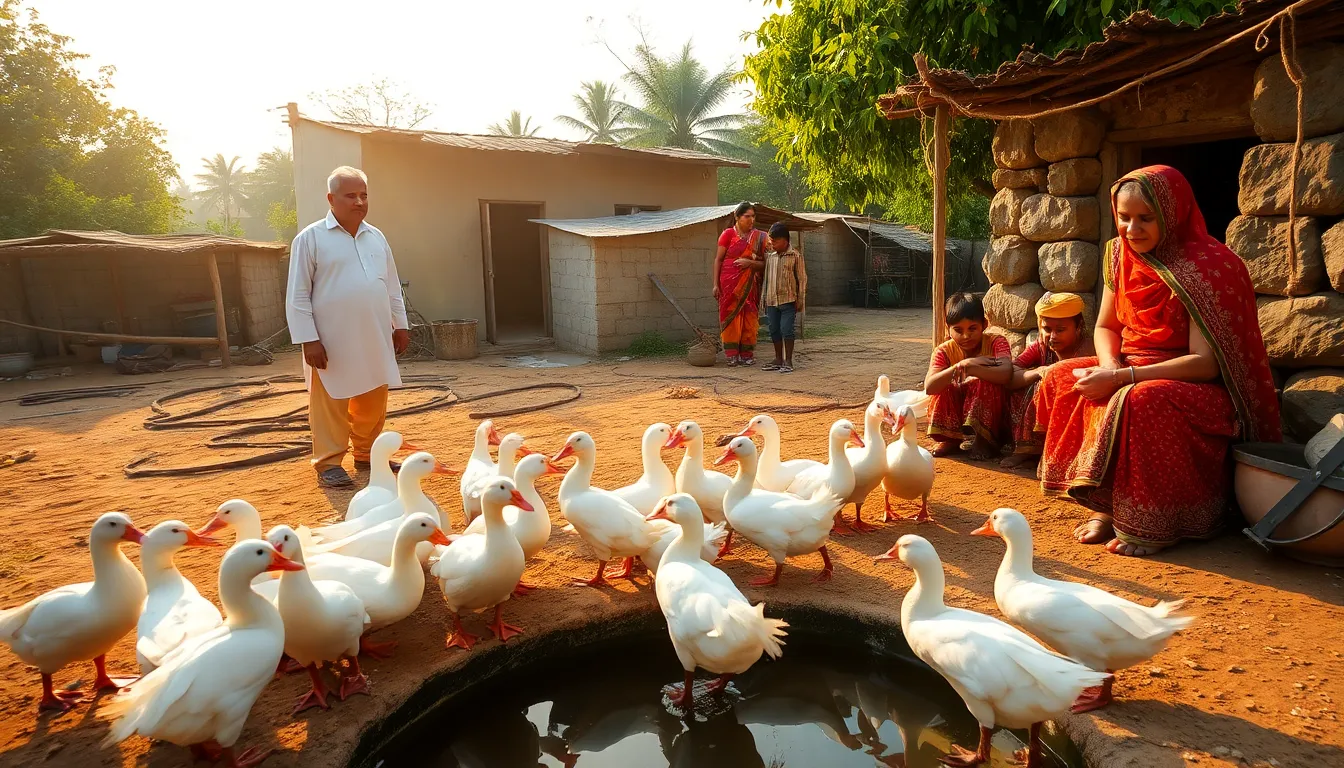Backyard duck rearing can be a great way for small farmers in rural India to earn extra income. This method is eco-friendly and requires low investment. The crossbred ducks, a mix of White Pekin and Khaki Campbell, are perfect for this purpose. They thrive on local feeds and can produce good weight gain and eggs with minimal care.
In many regions of India, especially in the east and south, duck rearing is a long-standing tradition. Ducks are strong birds that can swim in ponds and find their own food. Scientists have bred a new type of duck by combining the best traits of White Pekin, which is known for meat, and Khaki Campbell, known for egg-laying.
These crossbred ducks grow quickly and are suitable for backyard farming. They do not need expensive feed or large houses. They can eat local waste, leftover rice, vegetable scraps, and even fish scales. This makes them ideal for small and marginal farmers who want to boost their income without high costs.
Here are some reasons why these crossbred ducks are a good choice for farmers:
1. Fast Growth: These ducks can reach a weight of about 1.7 to 1.8 kg by 16 weeks. They achieve this without needing commercial feed.
2. Early Egg Production: Ducks start laying eggs at about 5 months old.
3. Good Egg Production: They can produce an average of 51% eggs at 40 weeks of age.
4. Heavy Eggs: Each egg weighs about 59 grams, which is good for market sales.
5. Low Mortality Rate: With proper care, mortality is only about 12% in the first few weeks.
Starting a duck farm at home is simple. Here’s how:
– Hatch ducklings in a warm, basic shed. Use rice husk for bedding.
– Feed them boiled broken rice and give them clean water.
– Provide basic vitamins and antibiotics as suggested by a vet.
– Let the ducks roam freely during the day and feed them kitchen waste, rice leftovers, and vegetable peels.
– Secure them at night to protect against predators.
– If you have a pond nearby, allow them to swim and forage.
Ducks love water; it helps with digestion and finding food. You can save money since ducks can eat local waste and food from the pond, but you can also provide grains if available.
Women and children in the family can help with duck rearing. They can assist with feeding, guarding the ducks, and collecting eggs.
Farmers can sell the eggs for Rs. 8–10 each and live ducks for meat. If you raise just 25 ducklings, you can earn around Rs. 9,000–Rs. 10,000 in 8–9 months. This profit does not include costs like housing and family labor, which are often low in rural areas. The profit can be higher if you raise the ducks for a longer time.
This home duck farming system is ideal for rural areas as it requires little investment and uses local resources like household waste and kitchen scraps. You can keep ducks in small areas near your home without needing large investments in infrastructure. This venture is particularly suitable for women and elderly family members who can care for them daily and collect the eggs.
Ducks provide both meat and eggs, enhancing nutrition for the household and generating cash income. The dual purpose of these crossbred ducks makes them more productive than local breeds and less resource-intensive than commercial poultry. This model offers sustainable opportunities for marginal and landless farmers, promoting self-employment and food security in villages.
If you have a backyard, a pond nearby, and access to domestic waste, you can start raising crossbred ducks and earn a good income. It is a suitable option for small farmers, tribal communities, and landless farm workers looking to diversify their livelihoods with a low-cost, low-risk animal husbandry activity. With help from local research centres or veterinary officers, rural households can turn duck rearing into a profitable venture.
In summary, crossbred ducks (White Pekin × Khaki Campbell) are not just poultry; they are a pathway to better rural living.

